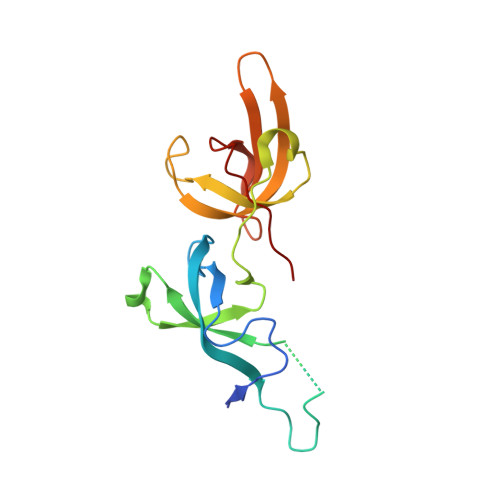Discovery of small molecules targeting the tandem tudor domain of the epigenetic factor UHRF1 using fragment-based ligand discovery.
Chang, L., Campbell, J., Raji, I.O., Guduru, S.K.R., Kandel, P., Nguyen, M., Liu, S., Tran, K., Venugopal, N.K., Taylor, B.C., Holt, M.V., Young, N.L., Samuel, E.L.G., Jain, P., Santini, C., Sankaran, B., MacKenzie, K.R., Young, D.W.(2021) Sci Rep 11: 1121-1121
- PubMed: 33441849
- DOI: https://doi.org/10.1038/s41598-020-80588-4
- Primary Citation of Related Structures:
6VYJ, 6W92 - PubMed Abstract:
Despite the established roles of the epigenetic factor UHRF1 in oncogenesis, no UHRF1-targeting therapeutics have been reported to date. In this study, we use fragment-based ligand discovery to identify novel scaffolds for targeting the isolated UHRF1 tandem Tudor domain (TTD), which recognizes the heterochromatin-associated histone mark H3K9me3 and supports intramolecular contacts with other regions of UHRF1. Using both binding-based and function-based screens of a ~ 2300-fragment library in parallel, we identified 2,4-lutidine as a hit for follow-up NMR and X-ray crystallography studies. Unlike previous reported ligands, 2,4-lutidine binds to two binding pockets that are in close proximity on TTD and so has the potential to be evolved into more potent inhibitors using a fragment-linking strategy. Our study provides a useful starting point for developing potent chemical probes against UHRF1.
- Department of Pharmacology and Chemical Biology, Baylor College of Medicine, Houston, TX, 77030, USA.
Organizational Affiliation:

















